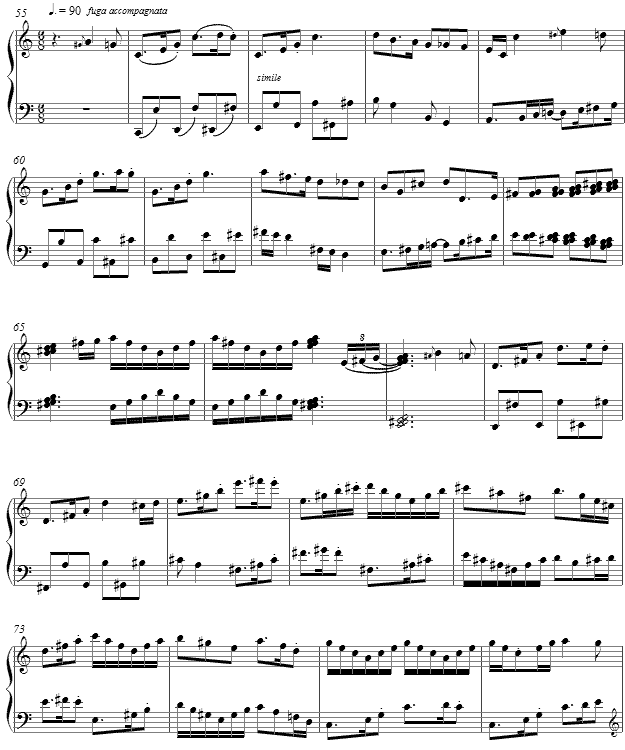Music and Texts of GARY BACHLUND
Vocal Music | Piano | Organ | Chamber Music | Orchestral | Articles and Commentary | Poems and Stories | Miscellany | FAQs
Rag and Fugue on Quartal C - (2007)
for piano
As with the rags and fugues composed before this, I chose to make a study in music of one element, in this case the chord built on 4ths. As a counter trend to the Second Viennese School, Paul Hindemith spent some of his compositional efforts using fourths to replace the triad and also avoid the nebulous twelve tone schemes already well examined in the decades before him. But with the other competing trend in twentieth century music -- the so-called popular music -- jazz chords and the like were also built on quartal structures while firmly within triadic harmony. It is of this trend that the rag is constructed, as well as the obvious fact that ragtime is a distinctively American musical style. [ 1 ]
The opening parallel chords announce the vocabulary, and a small opening in ragtime rhythm sets the stage for the parallelism and "slip" chromaticism of the rag theme itself. The upbeat is stressed as an additional stylistic feature.
The fugue is an accompanied theme in which the melodic line in 6/8 is harmonized with a 3/4 time walking bass line. Successive entrances of the fugue subject find their way into several keys beyond the standard plan, and not according to the tonic-dominant relationship as one finds in much common practice counterpoint. With the exception of spelling a few chromatic "neighbor" notes as flats, new entrances of the subject show themselves in "sharper keys," tying the quartal chords of the rag to this set of tonal relationships.
The score for Rag and Fugue on Quartal C is available as a free PDF download, though any major commercial performance or recording of the work is prohibited without prior arrangement with the composer. Click on the graphic below for this piano score.
NOTES
[ 1 ] This statement us well supported by the black American poet, James Weldon Johnson, as he writes:
"Any one who witnesses a musical production in which there is dancing cannot fail to notice the Negro stamp on all the movements; a stamp which even the great vogue of Russian dances that swept the country about the time of the popular dance craze could not affect. That peculiar swaying of the shoulders which you see done everywhere by the blond girls of the chorus is nothing more than a movement from the Negro dance referred to above, the "eagle rock." Occasionally the movement takes on a suggestion of the, now outlawed, 'shimmy.' As for Ragtime, I go straight to the statement that it is the one artistic production by which America is known the world over. It has been all-conquering. Everywhere it is hailed as 'American music'." [ pp. ix-x, "Preface" to The Book of American Negro Poetry, Harcourt, Brace and Company, 1922 ]

